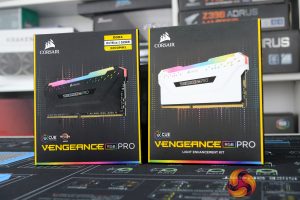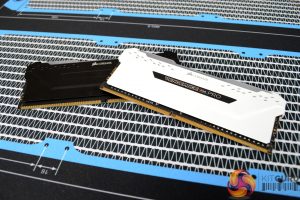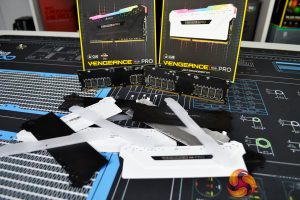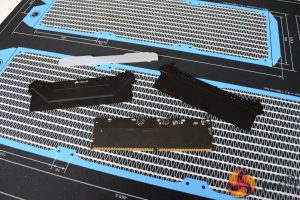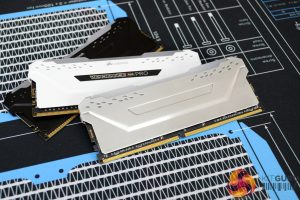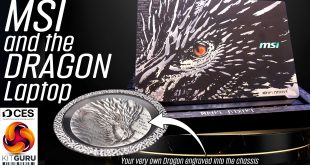This week, in part two of the Seasonic Aura build project, we drop off the Fractal Define 7 XL side panels that we prepared in the previous episode, check out the laser cutting machine in action and then head back to our workshop to begin modding the heat spreaders on our Corsair Vengeance RGB PRO memory modules.
We kick off part two by dropping off parts of the Define 7 XL case at Specialised Laser Products in Rotherham, ready for our new panels to be designed and put into production. We expect these new panels will be manufactured within the next couple of weeks, so we will keep you guys up to date with progress, and hopefully we will capture some footage of the actual panels being made in upcoming episodes.
The laser cutting machine that will be cutting our parts is a Bystronic BySprint Fiber 4020, with a 4m x 2m bed and is capable of cutting through a huge range of metals including various grades of mild steel, stainless steel and aluminium, our panels should be easy work for such a machine. We expect high-quality parts to be produced since this is not a DIY machine that could be set up in your garage at home.
While the new case panels are being made, we find other jobs to start on back at our workshop. One of those jobs is modifying the heat spreaders of the Corsair Vengeance RGB PRO memory modules that we will be using in the build. Corsair offers these modules with a choice of heat spreader colours including black and white. While both stock options look good, we think a change of appearance will suit the Seasonic Aura theme better.
The plan is to mod the heat spreaders of the memory modules to fit in with the industrial theme of the system. This will mean either painting, polishing, hydro dipping or some other method to change the appearance from the stock black or white coating. First, we need to remove the heat spreaders which can sometimes be a troublesome job. Once the heat spreaders are removed, we can move on to modding the appearance.
We walk through the removal process in detail. The use of a heat gun is required to remove the heat spreaders, along with some careful prying using plastic pry tools. Trying to remove the heat spreaders too quickly or with too much force can lead to damage of the memory modules. After we successfully remove the Vengeance RGB Pro heat spreaders we test that they still operate as normal on our test bench.
Once the heat spreaders have been removed from the memory modules and the modules have been tested to ensure they still function correctly, we decide on the final appearance of the modules and show you guys how to achieve this finish on these heat spreaders. The processes used in this video will be similar to the removal of heat spreaders on other memory modules as they are generally bonded to the memory modules, so this guide should come in handy to any of you guys who are thinking about modding memory heat spreaders.
KitGuru says: Modding memory modules isn't for the faint-hearted, the use of heat and force needed to remove the heat spreaders from the memory can damage modules if it's carried out incorrectly. We hope this video helps you guys with modding your own memory modules in the future.
 KitGuru KitGuru.net – Tech News | Hardware News | Hardware Reviews | IOS | Mobile | Gaming | Graphics Cards
KitGuru KitGuru.net – Tech News | Hardware News | Hardware Reviews | IOS | Mobile | Gaming | Graphics Cards


